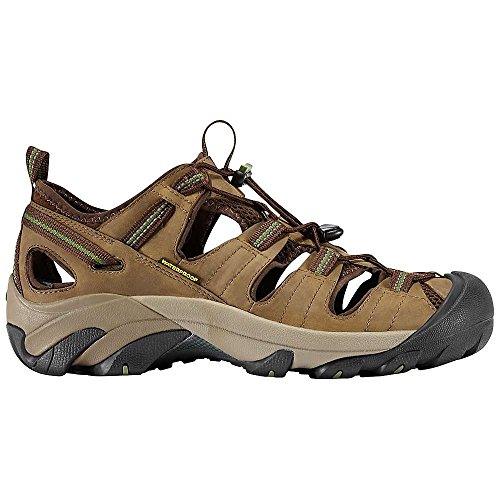5 Tips Leather Hiking Sandals

When it comes to hiking, the right footwear can make all the difference between a comfortable, enjoyable experience and a painful, frustrating one. Leather hiking sandals are a great option for warm weather hiking, offering a unique blend of protection, breathability, and flexibility. However, to get the most out of your leather hiking sandals, there are several key considerations to keep in mind. Here are five tips to help you choose and use your leather hiking sandals effectively:
1. Choose the Right Leather
The type of leather used in your hiking sandals can significantly impact their performance and durability. Full-grain leather, for example, is more durable and resistant to water than top-grain leather. It’s also breathable, which can help keep your feet cool and dry. Look for sandals made from high-quality, full-grain leather that has been treated for water resistance. This will help ensure that your sandals can withstand the elements and last for many hikes to come.
2. Consider the Sole
The sole of your hiking sandal is crucial for traction, support, and protection. A good hiking sandal should have a sturdy, grippy sole that can handle a variety of terrain, from smooth trails to rocky and slippery surfaces. Look for sandals with soles made from durable materials like rubber, and consider the depth and pattern of the tread. Aggressive tread patterns can provide better traction on challenging terrain, but may wear down more quickly on smoother surfaces.
3. Think About the Straps and Hardware
The straps and hardware on your hiking sandals can make a big difference in terms of comfort and security. Look for sandals with adjustable straps that can be tightened and loosened as needed, and consider the material and construction of the straps. Leather straps can be durable and comfortable, but may require some break-in time. Metal hardware should be sturdy and resistant to corrosion. Also, consider the closure system - buckles, hooks, or straps - and choose one that is easy to use and secure.
4. Break Them In
Leather hiking sandals, like any leather footwear, require a break-in period. This is especially true if you’re planning to wear them for extended periods or on long hikes. Start by wearing your sandals around the house or on short, easy hikes, and gradually increase the distance and intensity of your hikes as the leather softens and conforms to your feet. This will help prevent blisters and discomfort, and ensure that your sandals are comfortable and supportive on the trail.
5. Maintain Them
To get the most out of your leather hiking sandals, it’s essential to maintain them properly. After each use, clean the sandals with a soft brush or cloth to remove dirt and debris. Apply a leather conditioner or waterproofing treatment regularly to keep the leather soft and protected. Avoid exposing your sandals to extreme temperatures or direct sunlight for extended periods, as this can cause the leather to dry out or become brittle. By taking good care of your leather hiking sandals, you can extend their lifespan and ensure they remain comfortable and functional for many hikes to come.
One of the most overlooked aspects of hiking sandal maintenance is the importance of drying them properly after use. If your sandals get wet, either from water or sweat, it's crucial to dry them slowly and naturally. Avoid using direct heat, such as a hair dryer or radiator, as this can cause the leather to dry out or become misshapen. Instead, remove any excess water with a towel and let the sandals air dry away from direct sunlight.
Conclusion
Leather hiking sandals can be a fantastic choice for warm weather hiking, offering a unique combination of protection, flexibility, and breathability. By choosing the right leather, considering the sole, thinking about the straps and hardware, breaking them in, and maintaining them properly, you can get the most out of your leather hiking sandals and enjoy comfortable, enjoyable hikes all season long.
How do I know if leather hiking sandals are right for me?
+Leather hiking sandals are a great choice for anyone who enjoys hiking in warm weather and wants a breathable, flexible shoe that can handle a variety of terrain. However, they may not be the best choice for everyone, especially those who prioritize ankle support or plan to hike in cold or wet conditions. Consider your hiking style, the terrain you’ll be hiking on, and your personal preferences when deciding whether leather hiking sandals are right for you.
Can I wear leather hiking sandals in water?
+While leather hiking sandals can get wet, it’s generally not recommended to wear them in water for extended periods. Water can cause the leather to become waterlogged and heavy, and may lead to blisters or discomfort. If you plan to hike in wet conditions or cross rivers, consider wearing a waterproof or water-resistant hiking sandal instead.
How do I clean my leather hiking sandals?
+Cleaning your leather hiking sandals is relatively straightforward. Start by removing any loose dirt or debris with a soft brush or cloth. Then, use a mild soap and water to gently clean the leather, avoiding any harsh chemicals or abrasive materials. Finally, apply a leather conditioner or waterproofing treatment to keep the leather soft and protected.

